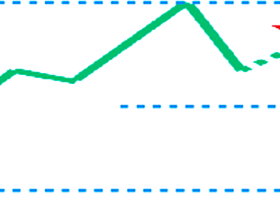
(29 MAY 2019)DAILY MARKET BRIEF 1:Safe-haven assets better bid as tension rises
On Wednesday morning, the Swiss franc and the Japanese yen were the only currency to gain ground against the greenback as investors fled from risky assets amid heightened tensions between the US and China. USD/CHF erased partially yesterday gains as it returned towards parity, down 0.20% to 1.0060. Similarly, the Japanese yen edged higher with USD/JPY testing the 109.10 support for the second time since the beginning of the month. However, the situation seems to have calmed down following the European opening. On the equity side, investors have massively sold their long positions and taken shelter in sovereign bonds. US treasuries yields fell across the board with 10-year yields sliding to 2.2230%, the lowest since September 2017. On the front-end of the yield curve, 2-year yields fell to a 15-month as it reached 2.0705%. In addition, the 3-month and 10-year yield curve inverted as the spread fell below 10 basis yesterday.
The last time the spread fell below that threshold was in early 2006, a year later the global financial crisis started. According to the money market, investors have raise bets that Jerome Powell will trim short-term interest rate no later than this year. According to OIS prices, the probability of a cut rose to 57.7% for the September meeting, 68% for October and 84% for December. Nevertheless, investors remain doubtful that the Fed would cut rate in June (probability of only 24%). It is worth noting that a recession often occurs after the Fed initiates a new easing cycle.
Global financial markets are torn between trusting central banks in their ability to support financial markets by flooding them with free liquidity and the appeal of common sense. Economies across the global have expanding for more than 10 years, 2 key indicators have send negative signals, geopolitical tensions are emerging across the globe. It looks like it is time.


